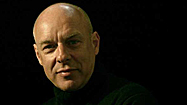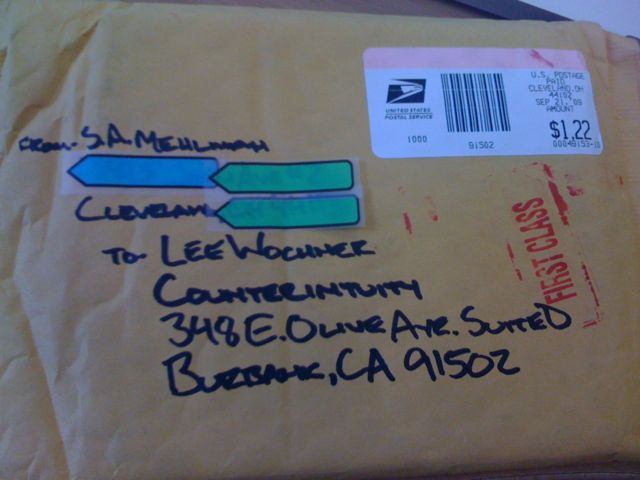 I don’t have a lot of interest in pleasant music. Yes, I can hear that it’s soothing, but I can’t figure out why you’d want music to soothe you. I want music to snap me out of it, to communicate something new in an interesting, dynamic way that’s impossible to refute.
I don’t have a lot of interest in pleasant music. Yes, I can hear that it’s soothing, but I can’t figure out why you’d want music to soothe you. I want music to snap me out of it, to communicate something new in an interesting, dynamic way that’s impossible to refute.
So, it’s easy to see why I like a lot of what I like: Roxy Music, Talking Heads, David Bowie, the ubiquitously written-about (here, anyway) Pere Ubu, TV on the Radio, Frank Zappa, Sonic Youth, Van Dyke Parks-era Beach Boys, King Crimson, and the like. What are the common elements? Intellectualism, contrapuntalism, dissonance, and surprise. What else do many of them have in common? Brian Eno.
It’s impossible to track the music I like without repeatedly stumbling across the name Brian Eno. The best Bowie albums? (Lodger, Low, “Heroes,” Outside.) They all featured Eno writing, producing, providing “atmospherics,” or a combination of all three. Same with the three Talking Heads albums truly worth owning, including the astonishing Remain in Light. Eno has had the immense good taste or good fortune to work repeatedly with the likes of Robert Fripp, Harold Budd, John Cale, Philip Glass, David Byrne, and many others, and I’ve gotten this far without mentioning another act he’s produced by the name of U2 because their music does nothing for me. Along the way, he invented ambient music and made a lot of money doing so.
Eno can’t “really” play music, although his ability to twiddle knobs on early synthesizer systems and tapeloop machines he stapled together in the early 1970s enabled him to play live with Roxy Music. As someone with lots of ideas and very little skill, Eno is the prototypical modern artist. The abstract expressionists couldn’t paint, Martha Graham’s dances don’t look like dance, there is some doubt that most of the current academically hailed playwrights can write a play, and Brian Eno can’t play an instrument or read music. When asked by one interviewer if he would have been a music had he been born at an earlier time, the 61-year-old Eno said no, because his instrument would’t have been invented yet. What instrument is that? “The recording studio.” There is obvious enormous benefit to the presence of a naif. Why does Eno’s 1974 album Taking Tiger Mountain by Strategy still sound so fresh, and so wrong? Because it wasn’t hampered by someone who knew how to do it “right.”

The past few years, Eno, who is also a painter, and is a painter in a similar way that he is a musician albeit with more training, has been doing installations of changeable art created by a random shifting interplay of abstract images, shown against a backdrop of ambient music. He’s now brought that show, “77 Million Paintings,” to Long Beach, where I’ll be seeing it on Sunday with a friend similarly well-versed in all things Eno before, miracle of miracles, we’ll also catch a lecture by Eno at the Carpenter Center that evening. Yes, I got those tickets almost as soon as the event was announced; good thing, too, because the lecture sold out almost immediately. I’ve been following Eno and his work with great interest for 30 years, and this is the first time he’s made an appearance anywhere near me, so I wasn’t going to miss out. Expect more here after the event.



 I don’t have a lot of interest in pleasant music. Yes, I can hear that it’s soothing, but I can’t figure out why you’d want music to soothe you. I want music to snap me out of it, to communicate something new in an interesting, dynamic way that’s impossible to refute.
I don’t have a lot of interest in pleasant music. Yes, I can hear that it’s soothing, but I can’t figure out why you’d want music to soothe you. I want music to snap me out of it, to communicate something new in an interesting, dynamic way that’s impossible to refute.
